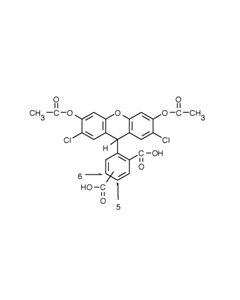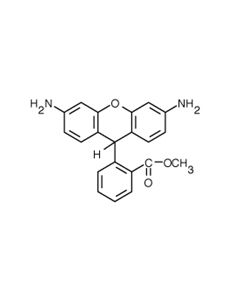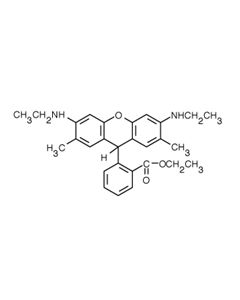Search results for: 'HEK293T cells expressing ACE2 and TMPRSS2'
- Related search terms
- and dnac pg set mahjong 1 gpr39 bee larg
- and dnac pg sel mahjong 1 gpr39 bee larg
- and daud pg set mahjong 1 gpr39 bee larg
- and daud pg sel mahjong 1 gpr39 bee larg
- and improve water quality. Flexible lawns, waterfront platforms, and modular market spaces cater to diverse recreational needs.
-
 BQCell™ BlueCell Viability Assay kit370,00 €Blue Cell Viability Assay Kit offers a simple, rapid, reliable, sensitive, safe and cost-effective measurement of cell viability. The BLUE Cell viability kit detects cell viability by utilizing a blue indicator dye resazurin to measure the metabolic capacity of cells Learn More
BQCell™ BlueCell Viability Assay kit370,00 €Blue Cell Viability Assay Kit offers a simple, rapid, reliable, sensitive, safe and cost-effective measurement of cell viability. The BLUE Cell viability kit detects cell viability by utilizing a blue indicator dye resazurin to measure the metabolic capacity of cells Learn More -
 BQCell™ BlueCell Viability Assay kit155,00 €Blue Cell Viability Assay Kit offers a simple, rapid, reliable, sensitive, safe and cost-effective measurement of cell viability. The BLUE Cell viability kit detects cell viability by utilizing a blue indicator dye resazurin to measure the metabolic capacity of cells Learn More
BQCell™ BlueCell Viability Assay kit155,00 €Blue Cell Viability Assay Kit offers a simple, rapid, reliable, sensitive, safe and cost-effective measurement of cell viability. The BLUE Cell viability kit detects cell viability by utilizing a blue indicator dye resazurin to measure the metabolic capacity of cells Learn More -
 Carboxy-H2DCFDA ROS indicator145,00 €ROS indicator, Ex/Em = 495/529 nm. Carboxy-H2DCFDA [5-(and 6)-Carboxy-2′,7′-dichlorodihydrofluorescein diacetate] is a chemically reduced analogue of fluorescein used as an indicator for reactive oxygen species (ROS) in cells. Upon cleavage of the acetate groups by intracellular esterases and oxidation, the nonfluorescent Carboxy-H2DCFDA is converted to the highly fluorescent 5-(and 6)-carboxy-2',7'-dichlorofluorescein, with additional negative charges that impede its leakage out of the cell. Learn More
Carboxy-H2DCFDA ROS indicator145,00 €ROS indicator, Ex/Em = 495/529 nm. Carboxy-H2DCFDA [5-(and 6)-Carboxy-2′,7′-dichlorodihydrofluorescein diacetate] is a chemically reduced analogue of fluorescein used as an indicator for reactive oxygen species (ROS) in cells. Upon cleavage of the acetate groups by intracellular esterases and oxidation, the nonfluorescent Carboxy-H2DCFDA is converted to the highly fluorescent 5-(and 6)-carboxy-2',7'-dichlorofluorescein, with additional negative charges that impede its leakage out of the cell. Learn More -
 EndoFectin™ Max transfection reagent (1 mL)350,00 €
EndoFectin™ Max transfection reagent (1 mL)350,00 €EndoFectin™ Max is a lipid-based transfection reagent. This versatile transfection reagent has been tested and optimized for highly efficient transfection of a large collection of commonly used cell lines as well as many difficult-to-transfect cell lines. This technology allows achieving superior and reproducible transgene expression levels without any toxic effect.
Learn More -
 Secrete-Pair Dual Luminescence Assay Kit (1000 rxns)1 005,00 €Secrete-Pair™ Dual Luminescence Assay Kit is designed to analyze the activities of Gaussia Luciferase (GLuc) and Secreted Alkaline Phosphatase (SEAP) of a dual-reporter system side-by-side using the same sample from the cell culture medium. Both GLuc and Learn More
Secrete-Pair Dual Luminescence Assay Kit (1000 rxns)1 005,00 €Secrete-Pair™ Dual Luminescence Assay Kit is designed to analyze the activities of Gaussia Luciferase (GLuc) and Secreted Alkaline Phosphatase (SEAP) of a dual-reporter system side-by-side using the same sample from the cell culture medium. Both GLuc and Learn More -
 Secrete-Pair Dual Luminescence Assay Kit (100 rxns)175,00 €Secrete-Pair™ Dual Luminescence Assay Kit is designed to analyze the activities of Gaussia Luciferase (GLuc) and Secreted Alkaline Phosphatase (SEAP) of a dual-reporter system side-by-side using the same sample from the cell culture medium. Both GLuc and Learn More
Secrete-Pair Dual Luminescence Assay Kit (100 rxns)175,00 €Secrete-Pair™ Dual Luminescence Assay Kit is designed to analyze the activities of Gaussia Luciferase (GLuc) and Secreted Alkaline Phosphatase (SEAP) of a dual-reporter system side-by-side using the same sample from the cell culture medium. Both GLuc and Learn More -
 Secrete-Pair Dual Luminescence Assay Kit (300 rxns)435,00 €Secrete-Pair™ Dual Luminescence Assay Kit is designed to analyze the activities of Gaussia Luciferase (GLuc) and Secreted Alkaline Phosphatase (SEAP) of a dual-reporter system side-by-side using the same sample from the cell culture medium. Both GLuc and Learn More
Secrete-Pair Dual Luminescence Assay Kit (300 rxns)435,00 €Secrete-Pair™ Dual Luminescence Assay Kit is designed to analyze the activities of Gaussia Luciferase (GLuc) and Secreted Alkaline Phosphatase (SEAP) of a dual-reporter system side-by-side using the same sample from the cell culture medium. Both GLuc and Learn More -
 H2DCFDA ROS indicator90,00 €ROS indicator, Ex/Em = 495/529 nm. H2DCFDA [2′,7′-dichlorodihydrofluorescein diacetate] is a chemically reduced analogue of fluorescein used as an indicator for reactive oxygen species (ROS) in cells. Upon cleavage of the acetate groups by intracellular esterases and oxidation, the nonfluorescent H2DCFDA is converted to the highly fluorescent 2',7'-dichlorofluorescein. Learn More
H2DCFDA ROS indicator90,00 €ROS indicator, Ex/Em = 495/529 nm. H2DCFDA [2′,7′-dichlorodihydrofluorescein diacetate] is a chemically reduced analogue of fluorescein used as an indicator for reactive oxygen species (ROS) in cells. Upon cleavage of the acetate groups by intracellular esterases and oxidation, the nonfluorescent H2DCFDA is converted to the highly fluorescent 2',7'-dichlorofluorescein. Learn More -
 DHR 123 ROS indicator160,00 €ROS indicator, Ex/Em = 507/529 nm. Dihydrorhodamine 123 is the reduced form of rhodamine 123, which is a commonly used fluorescent mitochondrial dye. Dihydrorhodamine 123 itself is non-fluorescent, but it readily enters most of the cells and is oxidized by oxidative species or by cellular redox systems to the fluorescent rhodamine 123 that accumulates in mitochondrial membranes. Dihydrorhodamine 123 is useful for detecting reactive oxygen species including superoxide and peroxynitrite. Learn More
DHR 123 ROS indicator160,00 €ROS indicator, Ex/Em = 507/529 nm. Dihydrorhodamine 123 is the reduced form of rhodamine 123, which is a commonly used fluorescent mitochondrial dye. Dihydrorhodamine 123 itself is non-fluorescent, but it readily enters most of the cells and is oxidized by oxidative species or by cellular redox systems to the fluorescent rhodamine 123 that accumulates in mitochondrial membranes. Dihydrorhodamine 123 is useful for detecting reactive oxygen species including superoxide and peroxynitrite. Learn More -
 DHR 6G ROS indicator160,00 €ROS indicator, Ex/Em = 528/551 nm. Dihydrorhodamine 6G is the reduced form of rhodamine 6G, which is used as fluorescent mitochondrial dye. It is nonfluorescent, but it readily enters most of the cells and is oxidized by oxidative species or by cellular redox systems to the fluorescent rhodamine 6G that accumulates in mitochondrial membranes. Dihydrorhodamine 6G is useful for detecting reactive oxygen species (ROS) including superoxide Learn More
DHR 6G ROS indicator160,00 €ROS indicator, Ex/Em = 528/551 nm. Dihydrorhodamine 6G is the reduced form of rhodamine 6G, which is used as fluorescent mitochondrial dye. It is nonfluorescent, but it readily enters most of the cells and is oxidized by oxidative species or by cellular redox systems to the fluorescent rhodamine 6G that accumulates in mitochondrial membranes. Dihydrorhodamine 6G is useful for detecting reactive oxygen species (ROS) including superoxide Learn More
